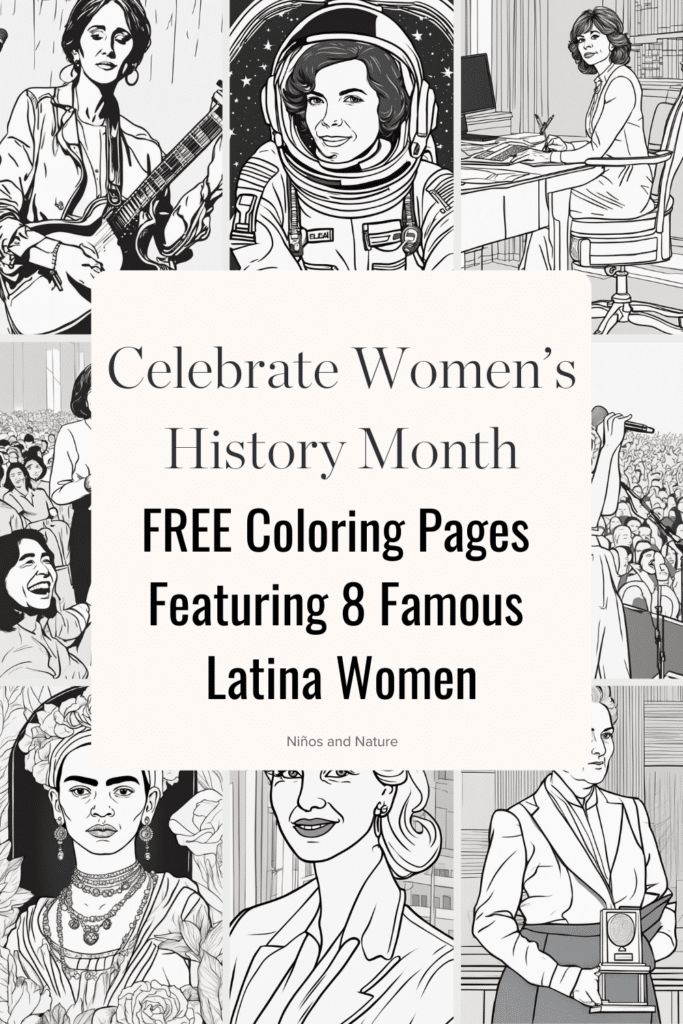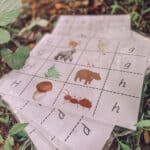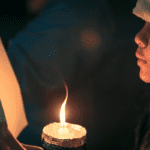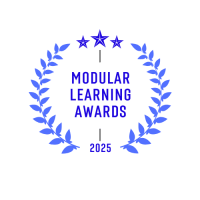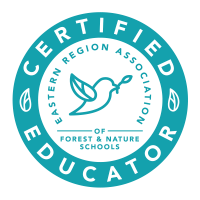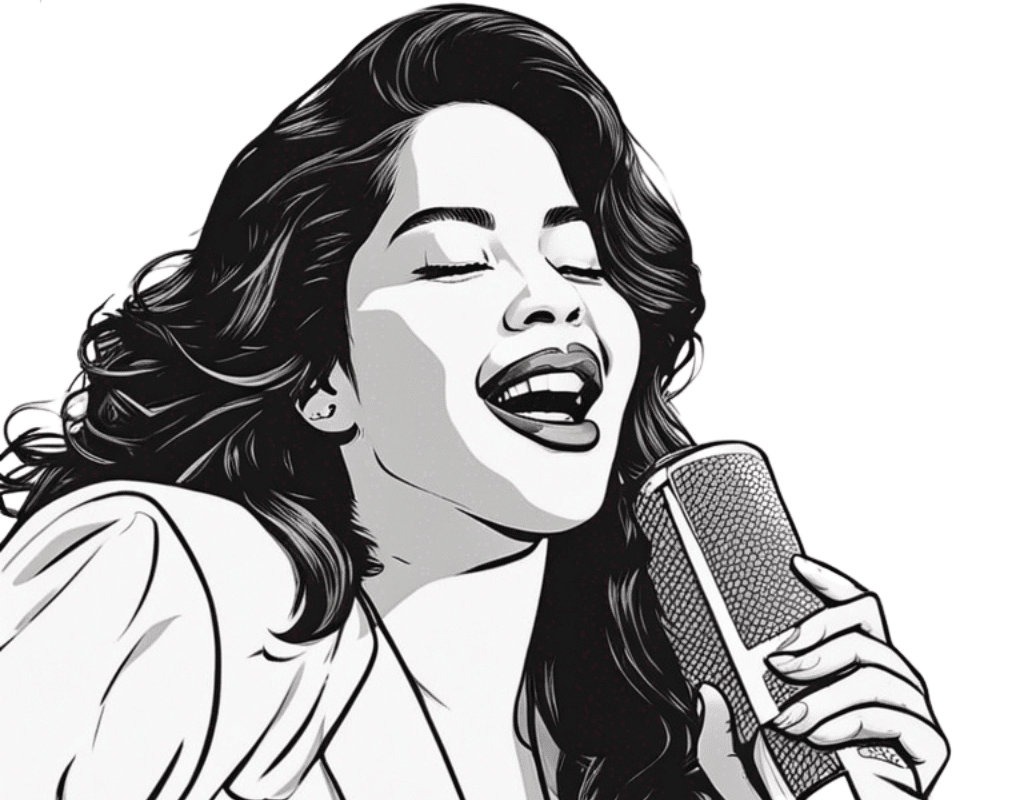
8 Latina Women to Celebrate with Kids this Women’s History Month
In this post: Looking for Ways to Engage Your Kids in Women’s History Month? Learn about 8 Inspiring Latina Women to Celebrate, Get Free Lesson Ideas for Teaching and Grab FREE coloring pages!
As a mama to twin girls, I have made it my mission to raise my daughters to feel empowered and inspired by the amazing work of all the women who came before us. We learn about and celebrate the achievements of women all year round, but Women’s History Month is an amazing time to really dive deep and learn more with our kids and students.
I wanted to write about 8 amazing Latina women who have inspired and influenced me over the years. From singers and artists, to astronauts and doctors, these famous Latina women helped pave the way for all of us to get to where we are today. Let’s learn more about these inspiring Latinas who have shaped history, influenced the society we live in, and changed the world for the better.
Table of Contents
What is Women's History Month?
March is Women’s History Month, a celebration of women’s contributions to history, culture, and society. The origins of Women’s History Month can be traced back to the first International Women’s Day in 1911. In the United States, Women’s History Month was first observed in 1987. Every year, a theme is chosen to recognize the achievements of women in different fields. In 2024 the theme is celebrating women who advocate for inclusion, equity and diversity.
Women’s History Month is an opportunity to raise awareness about the struggles and accomplishments of women throughout history. You can teach your children about inspiring women, in this post Latinas, who have made significant contributions to society. By celebrating Women’s History Month, we can honor the women who have paved the way for future generations.
Dolores Huerta
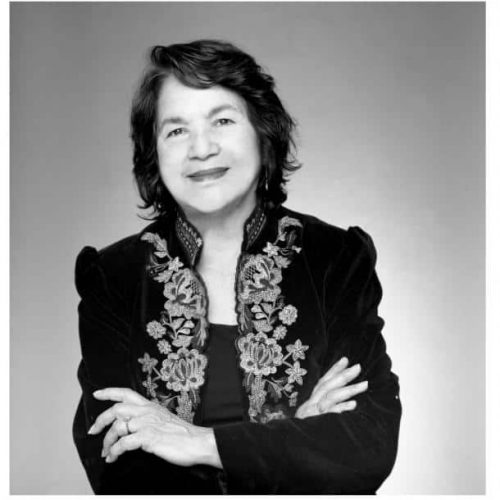
Main Achievements:
Co-Founding the United Farm Workers (UFW): Dolores Huerta co-founded the UFW, a pivotal labor union advocating for better conditions and wages for Latino farmworkers alongside Cesar Chavez.
Championing Farmworkers’ Rights and Social Justice: Huerta has dedicated her life to fighting for fair labor practices, improved living conditions, and broader social justice issues, including women’s and civil rights.
Popularizing “Sí, se puede” (Yes, we can): Huerta coined the empowering slogan “Sí, se puede,” a rallying cry that became globally recognized, symbolizing hope, empowerment, and the potential for positive change.
Biography: Dolores Huerta, born April 10, 1930, is a remarkable activist with a passion for justice. Growing up in the fields of California, she witnessed the struggles of farmworkers, sparking her lifelong commitment to make their lives better. Alongside Cesar Chavez, she co-founded the United Farm Workers, and her rallying cry, “Sí, se puede,” became a source of strength for countless people. Dolores, a tireless advocate for social justice, has dedicated her life to ensuring everyone is treated with dignity and fairness. Her inspiring journey continues to impact lives and ignite positive change.
Lessons to Teach:
Empowerment Collage:
- Provide children with magazines, colored paper, glue, and scissors.
- Ask them to create a collage that represents empowerment, justice, and positive change inspired by Dolores Huerta.
- Encourage them to include images, words, and colors that convey the spirit of “Sí, se puede” and the idea of making the world a better place.
“Sí, se puede” Chant and Artwork:
- Teach children the meaning behind the empowering slogan “Sí, se puede.”
- Have them create colorful posters or banners with the slogan using paints, markers, or crayons.
- Engage in a fun and lively activity where they practice chanting “Sí, se puede” together, emphasizing the idea of believing in themselves and their ability to make a positive impact.
Dr. Ellen Ochoa
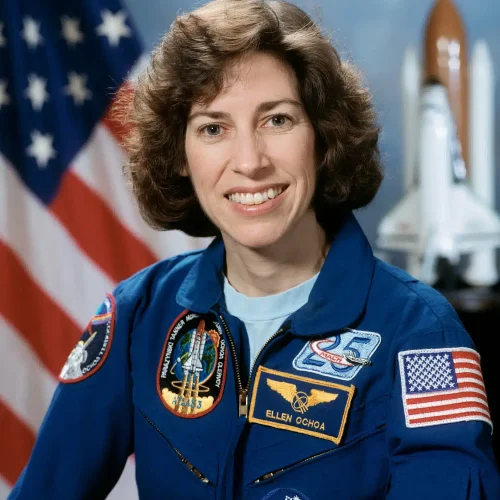
Main Achievements:
First Latina Astronaut:
- Dr. Ellen Ochoa made history as the first Latina astronaut in space when she flew aboard the space shuttle Discovery in 1993.
Innovative Engineer and Inventor:
- As an accomplished engineer, Ochoa contributed significantly to the development of optical systems for space exploration. She holds several patents for her inventions in the field of optics.
NASA Leadership Role:
- Dr. Ochoa served as the Director of NASA’s Johnson Space Center, becoming the first Hispanic and second female director in the center’s history. In this role, she played a crucial part in overseeing human spaceflight activities for the United States.
Biography: Dr. Ellen Ochoa, born on May 10, 1958, is a trailblazing figure in space exploration. Growing up in California, she was fascinated by science and engineering. In 1993, Ellen soared into history as the first Latina astronaut, riding the space shuttle Discovery. Beyond space, she’s an inventive engineer, holding patents for optical innovations. Dr. Ochoa also shattered ceilings at NASA, becoming the first Hispanic director of the Johnson Space Center. Her journey is an inspiring tale of curiosity, innovation, and reaching for the stars.
Lessons to Teach:
- Inventor’s Workshop:
- Set up an “Inventor’s Workshop” where kids can explore simple optical principles.
- Provide materials like magnifying glasses, prisms, and flashlights.
- Discuss how Dr. Ochoa contributed to optical innovation and encourage kids to experiment with these tools to understand basic concepts of light and optics.
Mission Control Simulation:
- Create a “Mission Control” scenario at home using toy spacecraft and a pretend space station.
- Assign roles such as astronaut, flight director, and communication specialist to family members.
- Guide children through a simulated space mission, discussing teamwork and problem-solving, reflecting on how leaders like Dr. Ochoa contribute to space exploration.
Joan Baez
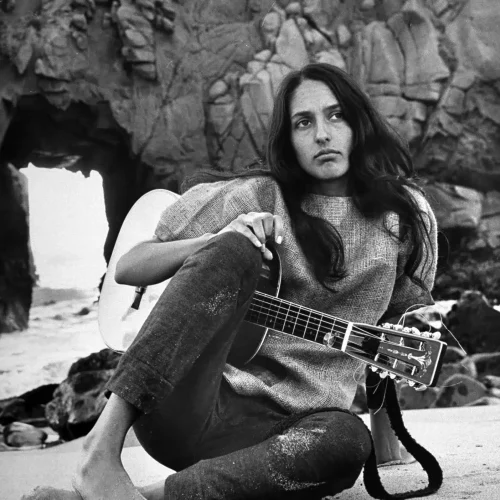
Main Achievements:
Folk Music Pioneer:
- Joan Baez is a celebrated figure in folk music, making a lasting impact during the 1960s folk revival.
Music as Activism:
- Known for using her music as a tool for social change, Baez passionately advocated for civil rights and nonviolence.
Peaceful Advocate:
- Baez’s commitment extended beyond music, as she actively participated in peaceful protests, aligning herself with causes such as civil rights and opposition to the Vietnam War.
Biography: Joan Baez, born on January 9, 1941, is a folk music icon with a profound commitment to social change. Raised in a musical family, she emerged as a leading voice in the 1960s folk revival. Beyond her captivating melodies, Baez used her music to champion civil rights and nonviolence, becoming a symbol of peaceful activism. Her timeless contributions to both music and humanitarian causes make Joan Baez an enduring figure whose legacy harmonizes the realms of art and activism.
Lessons to Teach:
“Sing with Joan” Workshop:
- Organize a virtual or in-person workshop where kids can learn and sing some of Joan Baez’s simpler folk songs like “We Shall Overcome”, “Guantanamera” or “Blowin’ in the Wind.”
- Provide lyrics, play the songs for them, and guide them through the melodies. Encourage creative expression by suggesting they add their unique twist or draw accompanying artwork inspired by the songs.
“Peaceful Visions” Discussion:
- Facilitate a group discussion about creating a more peaceful society, inspired by Joan Baez’s dedication to activism.
- Ask children to share their thoughts on what peace means to them and how they can contribute to a peaceful world. Discuss small acts of kindness, understanding, and inclusivity. Encourage them to express their ideas through drawings or short writings, creating a collective “Peaceful Visions” display to inspire positive actions in their community.
Isabel Allende
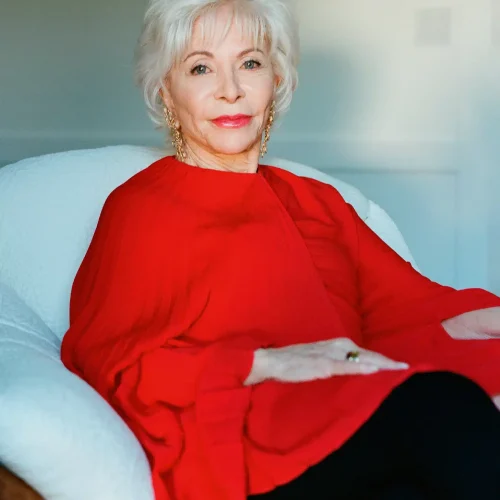
Main Achievements:
Internationally Acclaimed Author:
- Isabel Allende is a renowned Chilean-American author, best known for her globally acclaimed work “The House of the Spirits.”
Literary Legacy and Awards:
- Allende has received numerous awards, including the Presidential Medal of Freedom, for her impactful storytelling that explores themes of love, family, and social justice.
Humanitarian and Feminist Advocate:
- Beyond writing, Allende co-founded the Isabel Allende Foundation, championing women’s empowerment and social justice, showcasing her commitment to important causes.
Biography: Isabel Allende, born on August 2, 1942, in Lima, Peru, is a beloved Chilean-American author with a captivating life story. Fleeing political turmoil in Chile, she found solace in writing, producing iconic works like “The House of the Spirits.” Allende’s words, rich with magical realism, have touched hearts globally. Beyond her literary success, she’s a dedicated humanitarian, co-founding the Isabel Allende Foundation to champion women’s empowerment and social justice. Isabel Allende’s life and work beautifully intertwine, leaving an indelible mark on literature and advocacy alike.
Lessons to Teach:
Magical Realism Storytelling:
- Introduce kids to the concept of magical realism, a hallmark of Isabel Allende’s writing style.
- Encourage them to create their own short stories incorporating magical elements into everyday settings. This activity promotes creativity and an understanding of literary techniques.
Literary Passport Journey:
- Create a literary “passport” for each child, featuring stamps or stickers representing different countries that Isabel Allende’s stories are set in.
- As they read excerpts or age-appropriate summaries of her books, they can add stamps to their passports. This activity fosters a sense of adventure and cultural exploration.
Books Celebrating Famous Women for Kids
Selena

Main Achievements:
Tejano Music Trailblazer:
- Selena, the “Queen of Tejano Music,” broke barriers in the genre dominated by men, showcasing her incredible voice and stage presence.
Pop Music Crossover Icon:
- Selena’s influence extended into mainstream pop, with her album “Amor Prohibido” ranking among the best-selling Latin albums in the U.S.
Grammy Award Winner:
- Selena made history as a Grammy Award-winning artist for Best Mexican/American Album, solidifying her enduring impact on the Latin music scene.
Biography: Selena Quintanilla, born on April 16, 1971, in Lake Jackson, Texas, revolutionized the music scene as the “Queen of Tejano Music.” Leading Selena y Los Dinos, she broke gender barriers in Tejano, achieving crossover success with the hit album “Amor Prohibido.” In 1994, Selena made history, becoming the first Latina artist to win a Grammy. Tragically, her bright journey was cut short when she was fatally shot on March 31, 1995, at 23. Beyond her untimely end, Selena’s timeless music and cultural impact persist, leaving an indelible mark on Latina women’s representation in entertainment. Selena’s legacy endures as a beacon of musical brilliance and cultural pride, inspiring generations.
Lessons to Teach:
Create Your Own Selena Album Cover:
- Encourage kids to design their own album cover inspired by Selena’s iconic style.
- Provide art supplies like markers, glitter, and stickers, and let them showcase their creativity while incorporating elements reminiscent of Selena’s vibrant and unique album covers.
Tejano Dance Party:
- Organize a mini Tejano dance party at home, playing some of Selena’s upbeat hits.
- Teach kids basic Tejano dance steps or let them freestyle while enjoying the music. This activity introduces them to Selena’s energetic performances and the joy of dancing to her tunes.
Evangelina Rodriguez
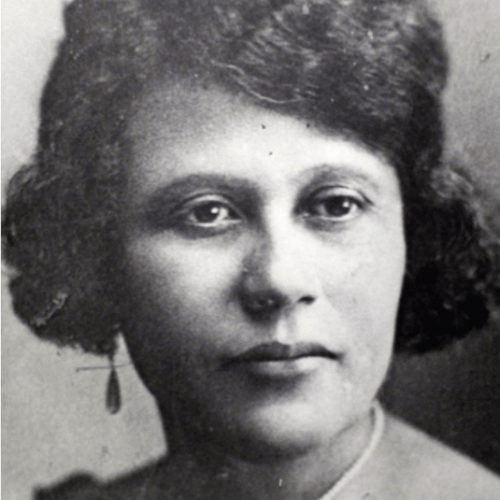
Main Achievements:
Medical Pioneer:
- Dr. Evangelina Rodriguez Perozo, born in 1879, shattered norms as the first woman to graduate from a Dominican medical school in 1902.
Women’s Health Advocate:
- Specializing in gynecology, she founded “La Gota de Leche” in 1925, offering free formula milk and essential services to underprivileged mothers.
Defiant Stand Against Dictatorship:
- Despite imprisonment and torture under the Trujillo dictatorship, Dr. Perozo’s legacy as a symbol of resilience remains, though often erased from official records.
Biography: Born on November 10, 1879, in San Rafael de Yuma, Dominican Republic, Dr. Evangelina Rodriguez Perozo defied societal norms as the first Latina to graduate from a Dominican medical school in 1902. Specializing in gynecology, she later founded “La Gota de Leche” in 1925, providing free formula milk and essential services to underprivileged Latina mothers. Despite facing adversity, including imprisonment under the Trujillo dictatorship, Dr. Perozo remains a resilient symbol and pioneer for Latina women in medicine and social justice.
Lessons to Teach:
- Creative Writing – Letters of Support:
- Invite children to transport themselves back in time to the era of Dr. Evangelina Rodriguez. Have them write heartfelt letters of support, expressing admiration for her courage and dedication. Encourage them to include specific details about her achievements and the challenges she faced, fostering both empathy and historical understanding. Try to bring in new Spanish words or write them full en español!
Symbolic Artwork – Resilience Sculpture:
- Ask kids to create a symbolic sculpture representing Dr. Rodriguez’s resilience. They can use materials like clay, wire, or recycled items to craft a visual representation of strength and determination. Prompt them to consider incorporating elements that symbolize her medical contributions, advocacy for women, and overcoming adversity. Display the sculptures together to celebrate their unique interpretations of Dr. Rodriguez’s inspiring legacy.
- Invite children to transport themselves back in time to the era of Dr. Evangelina Rodriguez. Have them write heartfelt letters of support, expressing admiration for her courage and dedication. Encourage them to include specific details about her achievements and the challenges she faced, fostering both empathy and historical understanding. Try to bring in new Spanish words or write them full en español!
Eva Perón
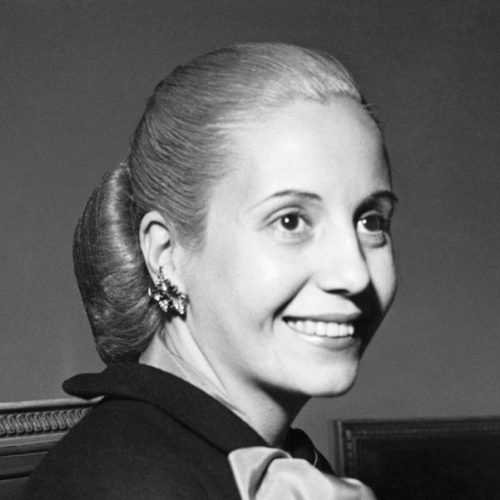
Main Achievements:
Women’s Suffrage Pioneer:
- Eva Perón played a crucial role in securing voting rights for Argentine women in 1947, a landmark achievement for gender equality.
Social Welfare Leader:
- As the driving force behind the Eva Perón Foundation, she implemented impactful social welfare programs, addressing poverty through healthcare, housing, and education initiatives.
Workers’ Rights Advocate:
- Eva Perón championed workers’ rights, contributing to improved labor conditions through the enactment of essential labor laws in Argentina.
Biography: Born on May 7, 1919, in Los Toldos, Argentina, Eva Perón, or Evita, made lasting contributions as First Lady. Instrumental in securing women’s voting rights in 1947, she led impactful social welfare programs, addressing poverty through healthcare and housing initiatives. An unwavering champion of workers’ rights, Evita’s efforts improved labor conditions. Despite her early death at 33 in 1952, she remains an enduring symbol of dedication to social justice and equality for the Argentine people.
Lessons to Teach:
- Historical Interview:
- Organize a mock interview where children take turns playing the role of Eva Perón and interviewers. This activity encourages research and helps them delve into her thoughts, motivations, and the challenges she faced during her impactful career.
- Portrait of Empowerment:
- Invite children to express Eva Perón’s legacy through art by creating empowering portraits. Using various art supplies, ask them to capture the essence of Evita’s advocacy for women, social welfare, and workers’ rights in their artwork. Display their creations to showcase different interpretations of her impact.
Gabriela Mistral
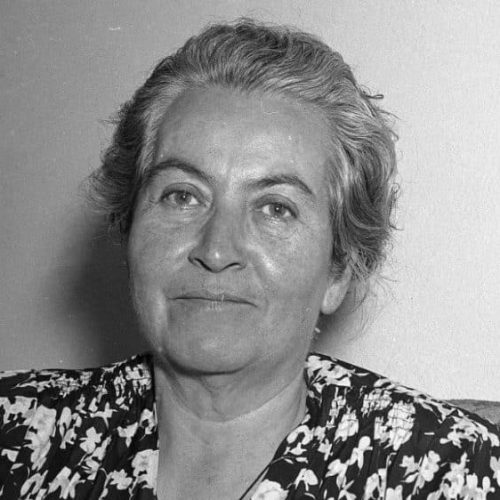
Main Achievements:
Nobel Prize in Literature (1945):
- Gabriela Mistral became the first Latin American woman to receive the Nobel Prize in Literature, acknowledging her profound contributions to poetry and social commentary.
Diplomat and Educator:
- Mistral served as a diplomat and cultural ambassador for Chile, promoting Latin American literature globally, and implemented progressive educational reforms in Mexico.
Poetic Legacy and Social Advocacy:
- Mistral’s enduring poetry explored themes of love and human suffering while using her platform to advocate for social justice, especially the rights of children and marginalized communities.
Biography: Born on April 7, 1889, in Vicuña, Chile, Gabriela Mistral made history as the first Latin American woman to win the Nobel Prize in Literature in 1945. Renowned for her poignant poetry and global cultural diplomacy, Mistral also championed educational reforms in Mexico. Committed to social justice, she advocated for the rights of children and marginalized communities. Mistral’s enduring legacy is marked by poetic brilliance and unwavering dedication to societal betterment. She passed away on January 10, 1957, leaving an indelible mark on literature and advocacy.
Lessons to Teach:
Poetry Exploration and Expression:
- Introduce kids to Gabriela Mistral’s poetry, exploring themes like love and nature. Encourage them to write their own poems inspired by Mistral’s works, fostering creativity and an appreciation for literary expression.
Community Advocacy Project:
- Inspire children to identify local issues aligning with Mistral’s advocacy for social justice. This project prompts them to propose creative solutions, fostering empathy and understanding of the impact one person can have on their community.
Free Coloring Pages Celebrating Famous Latina Women
Don’t miss my free coloring pages featuring these inspiring Latina women throughout history! Download them for free to use in your bilingual homeschool or Spanish classroom. Print one out for each amazing Latina woman you learn about with your kids. You can decorate the walls with your artwork, create a book, or use them to make a beautiful collaborative poster.
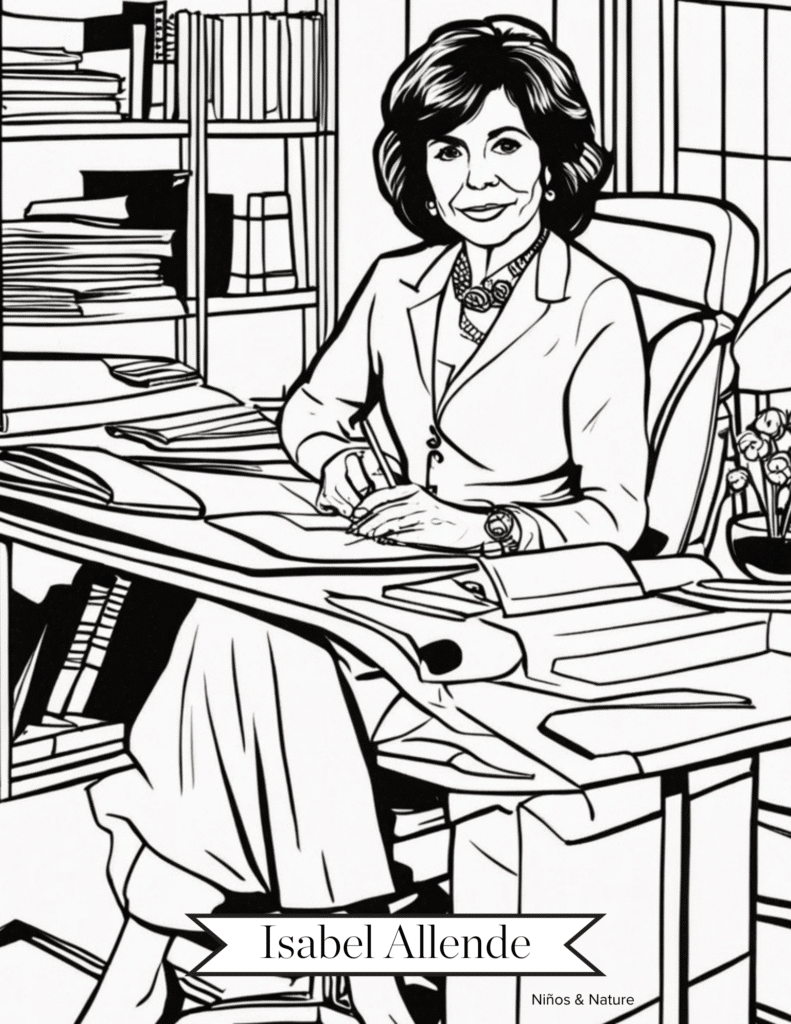
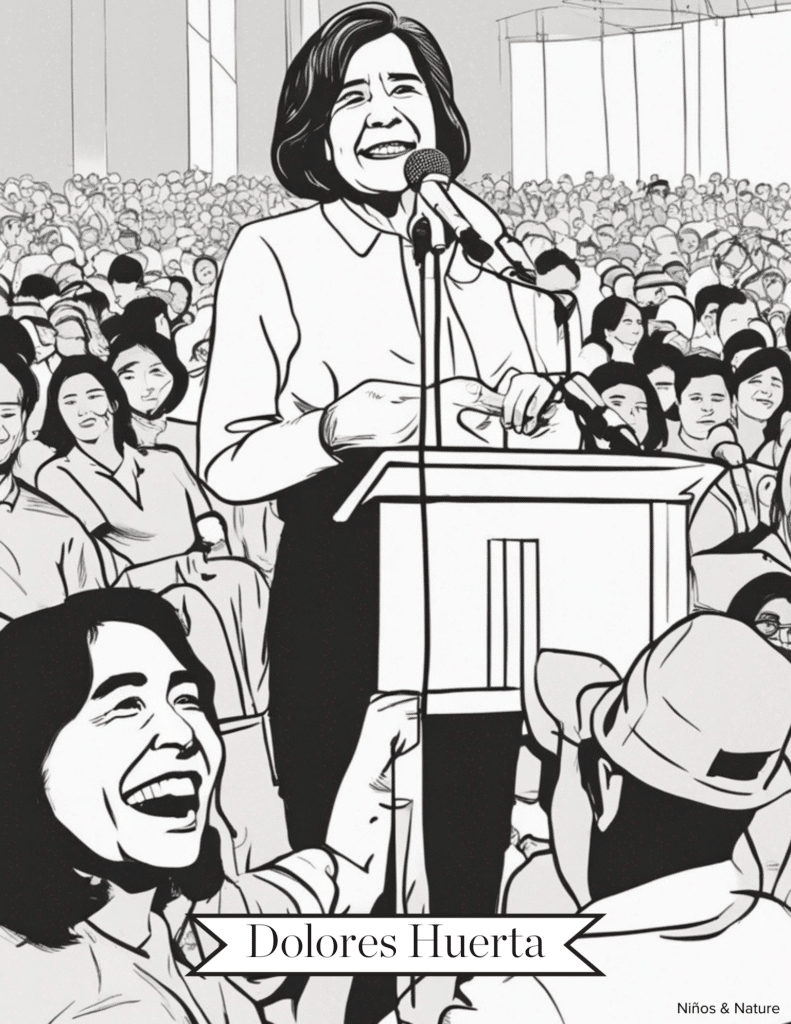
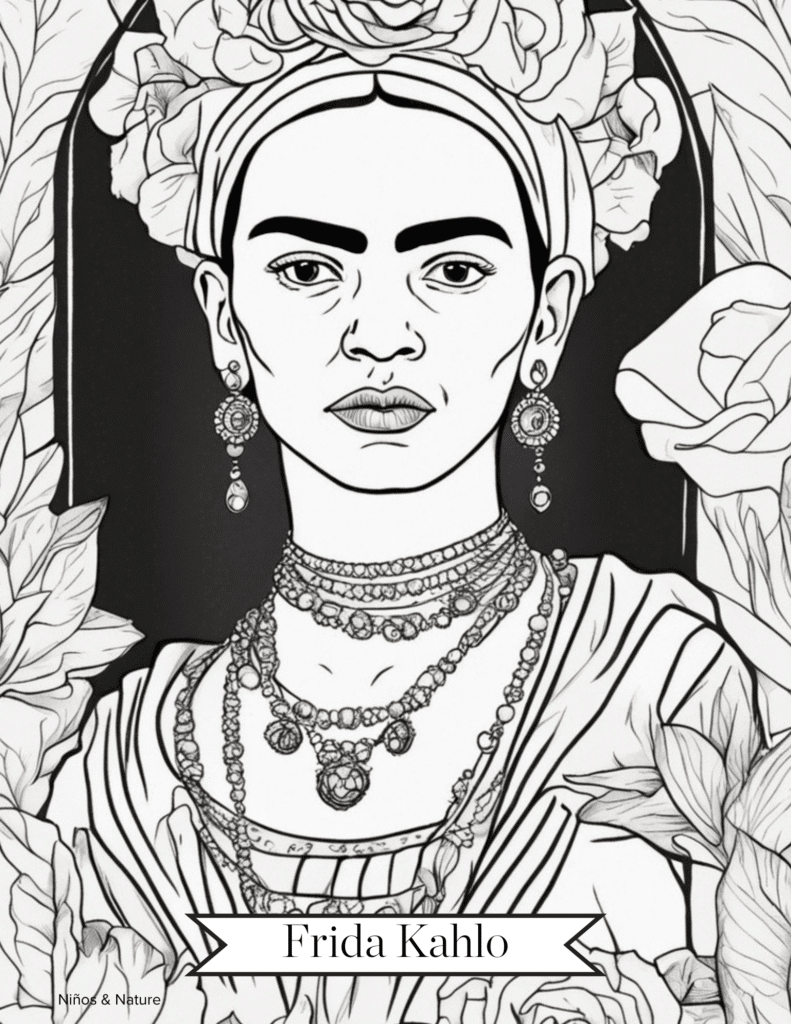
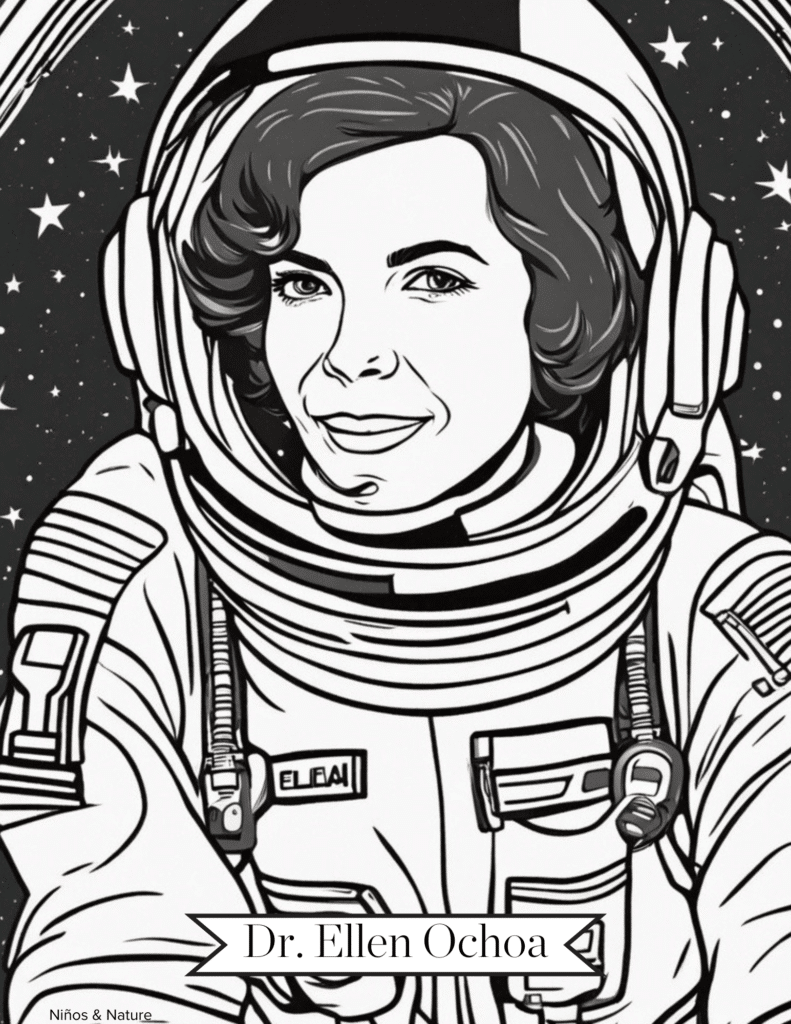
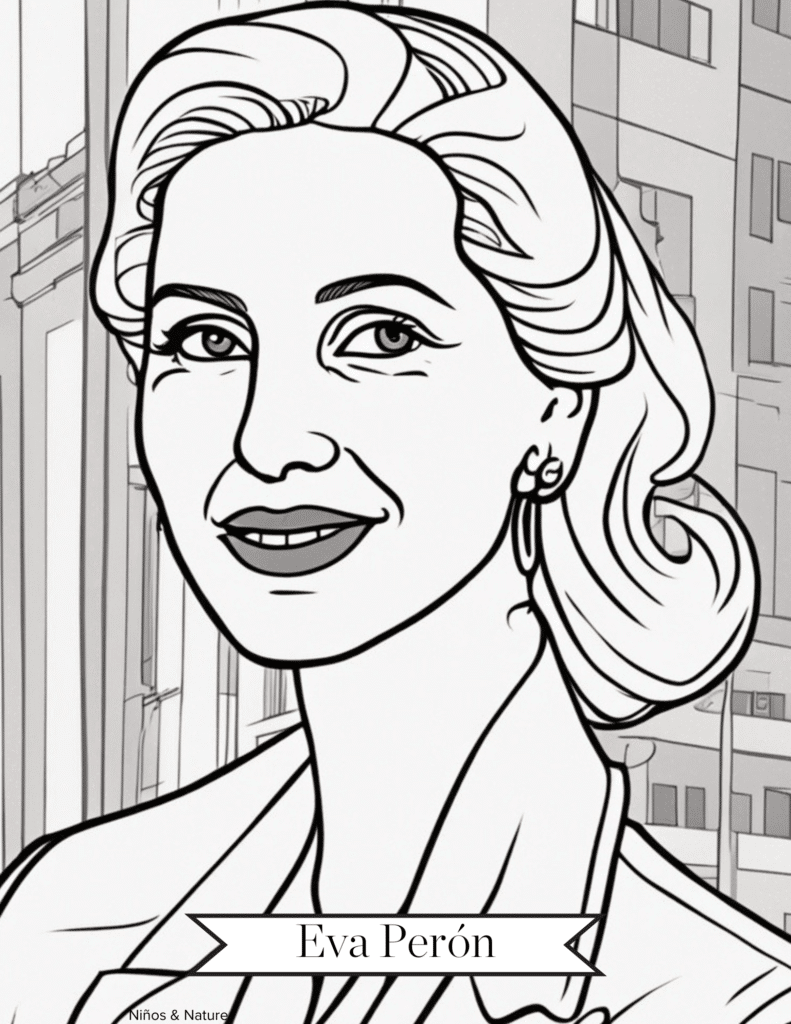
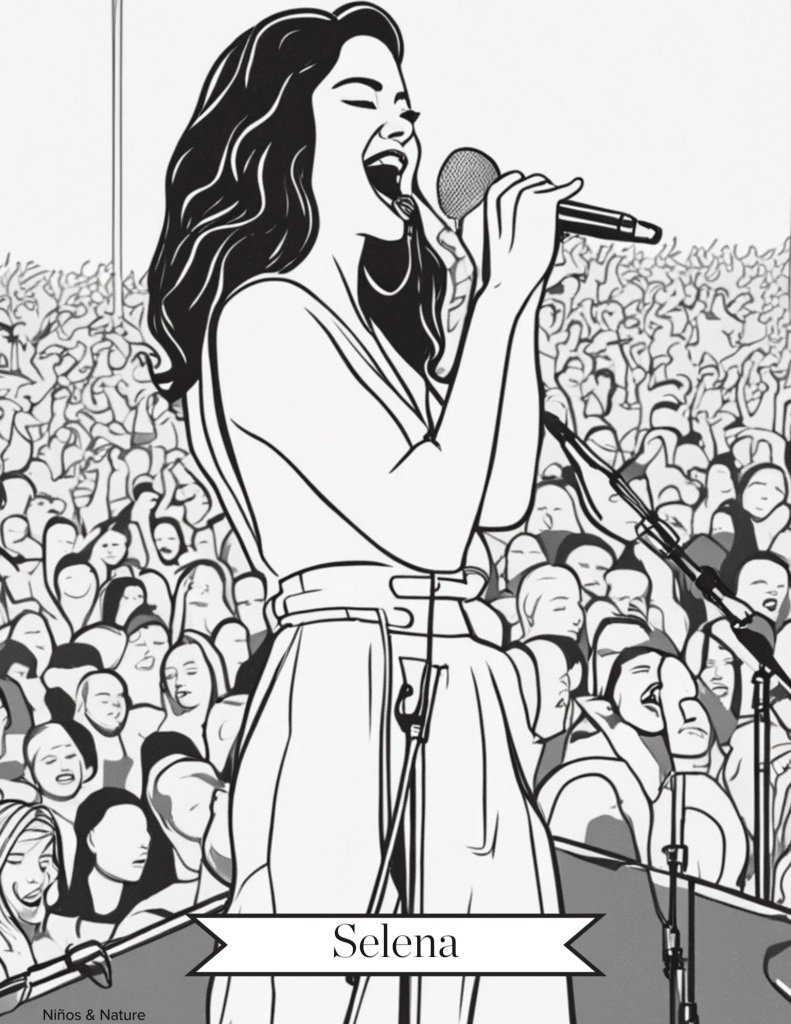
In wrapping up this journey through the remarkable lives of nine influential Latina women, may their stories continue to resonate as a testament to strength, resilience, and unyielding determination. From activists challenging the status quo to artists breaking new ground, each woman has left a mark on history.
As we celebrate Women’s History Month, let’s carry the legacies of these amazing Latina women forward, celebrating the changes they’ve brought to the world. I hope their achievements inspire us to create a future where every woman’s story is celebrated and uplifted.
Like this post? Share & Save it!
